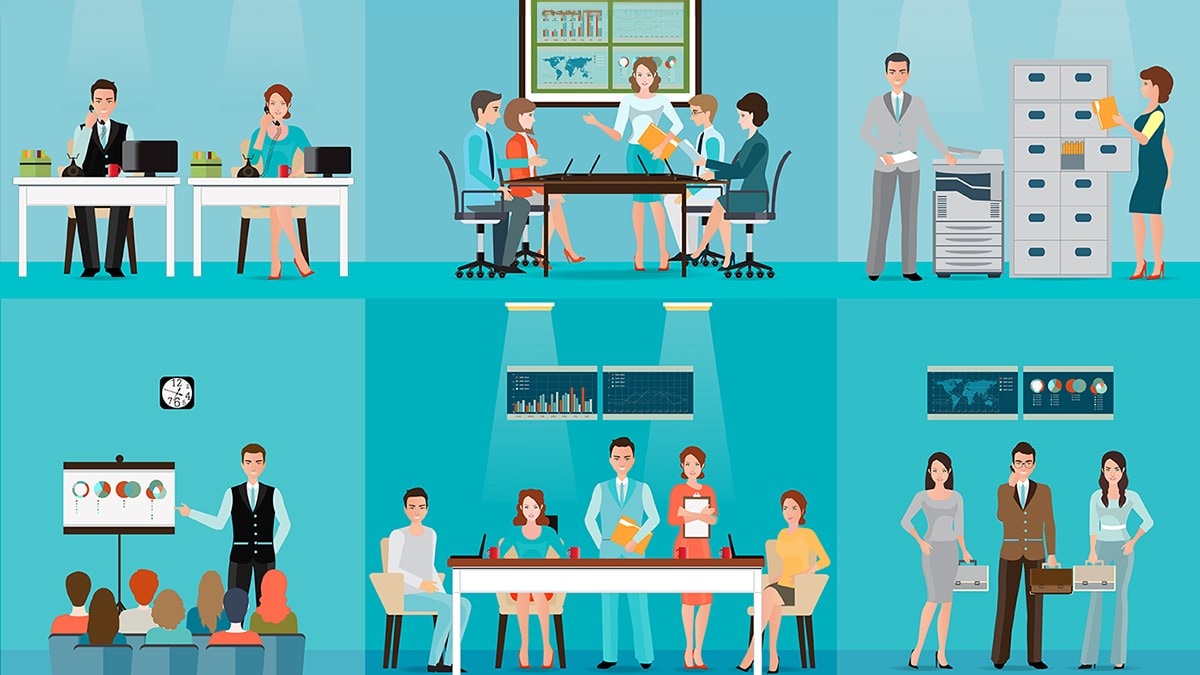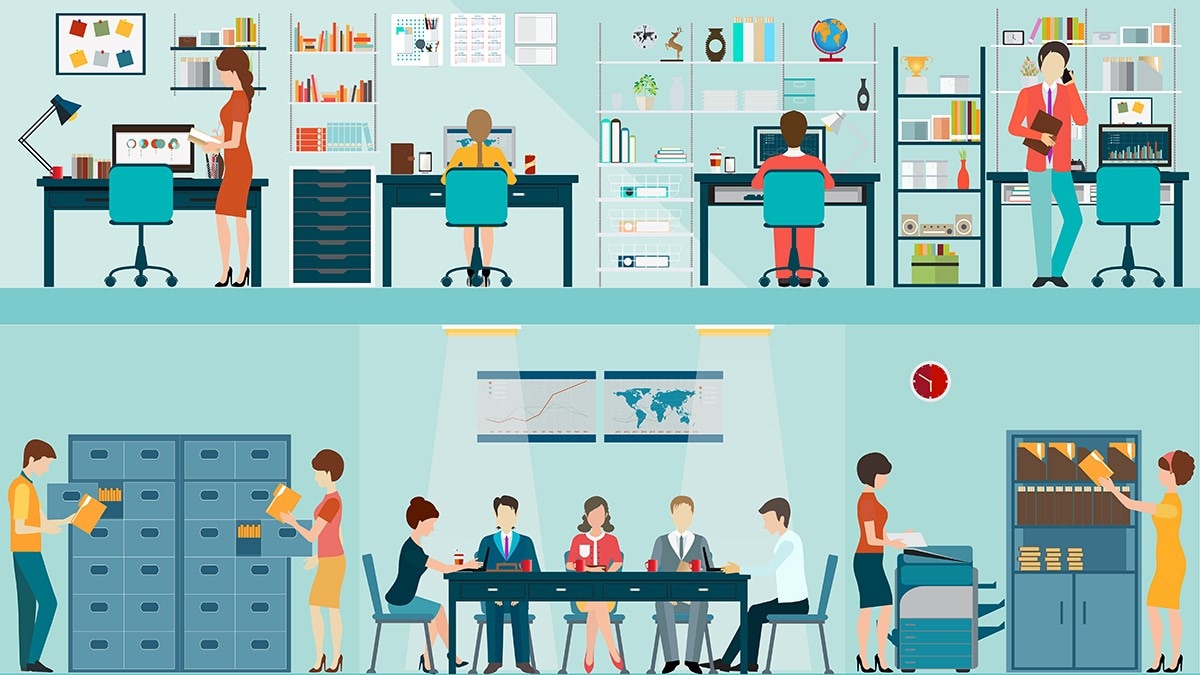Key points
- Maintaining a healthy office environment requires attention to various factors.
- Having a well-designed office allows workers to be comfortable and safe while they do their work.

Overview
Workers should be able to work without needing to:
- over-reach,
- sit or stand for too long, or
- use awkward postures (correct ergonomic design).
Sometimes, the best solution to allow workers to be comfortable while they work is to change the equipment or furniture.
Other times, it might be better to improve the tasks that workers do. For example, studies have shown that taking short breaks every hour helps reduce discomfort for those who work on computers.

Risks
There are situations that can lead to injury or illness in workers who work in offices.
Some physical hazards that can lead to injury or illness include:
- cords across walkways,
- leaving low drawers open, or
- objects falling from above.
Some task-related hazards that can lead to injury or illness include:
- speed,
- repetition,
- duration, or
- job control.
Some other hazards can be environmental (chemical or biological sources) or design-related hazards (such as nonadjustable furniture or equipment).
Job stress can happen when the job requirements do not match the capabilities or resources of the worker. This work-related stress may also lead to illness.
Steps to take
Employers and workers should consider the following factors when creating a healthy office environment:
- Make sure there are no harmful chemicals in the office.
- Have proper equipment and workstations.
- Maintain a good physical environment.
- Manage temperature, humidity, light, noise, air flow, and space.
- Manage temperature, humidity, light, noise, air flow, and space.
- Make sure that the tasks are designed correctly.
- Consider psychological factors.
- Think about personal interactions, work pace, and job control.
- Think about personal interactions, work pace, and job control.

Resources
NIOSH Publications on Video Display Terminals, Third Edition This publication is a collection of NIOSH publications and reports on video display terminals (VDTs).
Plain Language About Shiftwork This publication suggests strategies for employers and workers to ease the burdens associated with shiftwork.
Alternative Keyboards This publication gives information about common alternative keyboard designs and their effects on work posture.
Carbonless Copy Paper Provides additional information about health effects from exposure to carbonless paper.
EMF (Electric and Magnetic Fields) This link leads to a fact sheet that answers frequently asked questions about EMFs in the workplace.
Ergonomic and Musculoskeletal Disorders This link provides information on ergonomic recommendations and musculoskeletal health-related research.
Indoor Air Quality This link information on managing the air quality inside of buildings.
Stress at Work This link gives workers an overview of work-related stress and links to other resources.
Noise and Hearing Loss Prevention This link offers information about preventing work-related hearing loss.
Occupational Violence This link gives information about NIOSH research on risk factors and prevention strategies.
Women's Health and Safety This link gives information about NIOSH research for women's safety and health issues at work.
